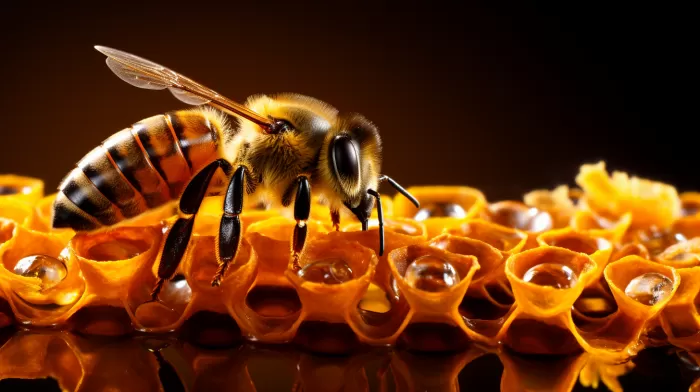Antibiotic-resistant bacteria are causing serious problems worldwide, taking the lives of more than 60 people per day in the United States alone. With few new antibiotics in the pipeline, alternative solutions must be found. It might surprise you to learn that one of nature’s most potent answers to this escalating health crisis could be living right in your own backyard, inside small insects gathered around your garden – honeybees.
For centuries, honey has been used medicinally for its natural healing properties in treating various ailments, including infections. However, a solid understanding of the intricacies of this natural wonder has been lacking – until now. A pioneering study conducted by researchers at Lund University in Sweden has delved deeper, uncovering 13 different types of lactic acid bacteria found in fresh honey.
Honeybees: Nature’s Antibiotic Factories
It turns out that the stomachs of honeybees, where the bacteria come from, are miniature miracle-workers. These life-saving insects don’t just produce delicious honey; they also churn out a wide range of compounds that can battle pathogens. In essence, honeybees are nature’s antibiotic factories.
The Lund University researchers put these tiny warriors to the test, applying the lactic acid bacteria found in honeybees to human wound infections, such as MRSA (methicillin-resistant Staphylococcus aureus), VRE (vancomycin-resistant Enterococcus), and Pseudomonas aeruginosa. These problematic infectious organisms pose significant challenges to modern medicine, but incredibly, after application of the bee bacteria in lab tests, all of these pathogens were killed.
Real-Life Infection Treatment Using Honey
The impressive results of these bacteria-fighting weapons don’t just stop in the laboratory. The researchers also employed the bee bacteria on horses suffering from non-healing wounds. By mixing the bacteria with honey, they successfully healed the lesions on 10 horses; conventional medications had previously been tried on these animals but to no avail.
“Antibiotics are mostly one active substance, effective against only a narrow spectrum of bacteria. When used alive, these 13 lactic acid bacteria produce the right kind of antimicrobial compounds as needed, depending on the threat,” explains researcher Tobias Olofsson. “It seems to have worked well for millions of years of protecting bees’ health and honey against other harmful microorganisms. However, since store-bought honey doesn’t contain the living lactic acid bacteria, many of its unique properties have been lost in recent times.”
The Future of Honey-Based Treatments
The dramatic results of the Lund University study offer an exciting look into the future of honey-based treatments. Honey, teamed with the bacteria found in honeybees, could potentially offer the medical community a new and powerful weapon in the ongoing battle against antibiotic-resistant bacteria.
That said, more research and clinical trials are needed to further validate these findings and determine the best way to harness the incredible healing power of honey and lactic acid bacteria against a wider range of human pathogens. For now, researchers may be well on their way to unlocking the full potential of honey in combating some of the most pernicious infections plaguing humanity.
But don’t rush to your pantry and start slathering store-bought honey on your cuts and scrapes just yet. As Olofsson points out, many of the unique and beneficial properties of natural honey are lost during processing and in many store-bought varieties. For the time being, it’s wise to leave honey’s infection-fighting potential to the experts and stick to tried-and-tested treatments from your healthcare provider. However, as the understanding of the power of honey continues to grow, we may soon see its remarkable healing properties more broadly integrated into our healthcare system to help stem the increasingly alarming tide of antibiotic resistance.



